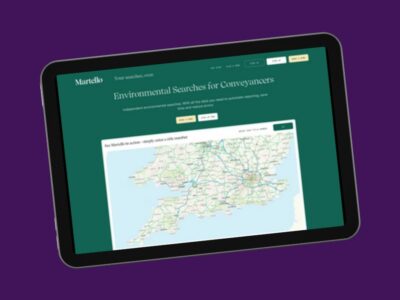IFRS S2: why companies need granular data for financial reporting
Contents
- What are the ISSB’s exposure drafts?
- What is the TCFD?
- The importance of granular data
- Flood risk requires granular data
- Explore FloodSmart Analytics in more depth
Transitioning to a low-carbon economy which reduces the impacts of climate change will be an onerous but necessary process.
If successful, it will not only help to curb harmful greenhouse gas emissions but provide opportunities for the creation of jobs, economic growth and improved international relationships.
To facilitate this transition, new types of financial information about commercial operations by global organisations and companies necessitate accurate and granular data.
What are the ISSB’s exposure drafts?
To elevate and codify disclosure of this new financial information, the International Sustainability Standards Board (ISSB) published exposure drafts in 2022.
As the first of its kind, Exposure Draft IFRS Climate-related Disclosures S2 requests that entities reveal how their financial positions and performance, future cash flows, strategy and business model will be impacted by climate-related risks.
To satisfy the draft’s recommendations, entities will require granular data which demonstrates the financial impacts the climate crisis will have.
Such insight will subsequently inform how risks relating to climate change are assessed and priced by lenders, insurance underwriters and investors.
What is the TCFD?
Prior to the ISSB’s publication of the exposure drafts, recommendations for the disclosure of climate-related information were initially introduced in the Task Force on Climate-related Financial Disclosures (TCFD), a framework published by the Financial Stability Board in 2015.
This framework outlines the process, methods and standards companies should follow for a thorough disclosure and breaks down its recommendations into four thematic areas:
- Governance
- Strategy
- Risk management
- Metrics and targets
These are further reinforced by 11 disclosures which ask entities to analyse and describe how climate change will affect their business, from policies and legal matters to services, products and climate resilience.
To align with the TCFD’s disclosures, listed entities must identify the risks and opportunities which arise as a result of climate change in their financial reporting.
This is not only to avoid negative repercussions of the transitional and physical risks associated with climate change but to help stakeholders understand whether their investments are being managed in a climate responsible manner.
The importance of granular data
Whilst the framework has certainly pushed companies to make more TCFD-aligned disclosures, there is still room for improvement; only four percent of companies reported climate-related financial information in line with the framework’s 11 disclosures in the 2021 fiscal year.
However, this will likely change when the ISSB’s exposure draft is given legal force. Companies now need to access granular data which explicitly informs them of how different climate-related risks will affect their business financially.
This issue was highlighted in the Financial Reporting Council’s thematic review of the TCFD in 2022 in which the independent regulator advised companies to move away from providing generic climate information and focus on delivering precise data.
In the executive summary, the review stipulates: “We expect the specificity and granularity of companies’ climate-related disclosures to improve as their processes to manage climate-related risks and opportunities become more fully embedded into governance and management structures.”
Flood risk requires granular data
As illustrated in Appendix B of the IFRS S2, flood risk is identified as a key climate risk financial disclosure metric in numerous commercial segments.
For example, in the lending segment (within financials) the number and value of mortgage loans in 100-year flood zones should be disclosed in the financial reporting of lenders. A review of recent flood events illustrates why such a disclosure is necessary.
To understand the threat flooding poses to a portfolio of properties in the UK, lenders could consult granular flood risk data, such as that produced by GeoSmart Information’s new product – FloodSmart Analytics.
Built by flood experts, the suite provides this information in flood maps which illustrate the predicted depths and extent of all flood sources and how these will impact a single property or entire portfolio.
This degree of insight into flood risk will not only improve reporting and disclosure practices but help to prepare companies for difficult outcomes where risks cannot simply be transferred to insurers or reinsurers.
Explore FloodSmart Analytics in more depth
GeoSmart Information has been providing high quality flood data for many years. Our latest capability is FloodSmart Analytics which provides unrivalled physical risk metrics together with cost data.
To arrange a demonstration, contact us today and address your enquiry to GeoSmart Information Risk Director, Phillip Martin.



